Mental Health Technology:
Innovations, Benefits, and Future Trends
Learn how Ripple Ranch integrates mental health technology with holistic care to enhance accessibility, diagnosis, and personalized treatment.
Written and medically reviewed by the clinical team at Ripple Ranch Recovery Center, including licensed therapists, addiction specialists, and medical professionals.
Underscoring the Need for Accessible Mental Health Support
Millions of Americans seek help for mental health conditions each year. However, many still face barriers such as:
- Location difficulties
- Stigma for receiving treatment
- Lack of access to traditional therapy
Recent data reveals that 54.7% of people with a mental health challenge did not receive any treatment in 2023.1

Table of Contents
Learn More About Ripple Ranch Recovery Center
Our team is standing by to discuss your situation and options. Your call is fully confidential, and no obligation is required
The Role of Mental Health Technology
Mental health technology offers accessible tools that enhance access to high-quality care. The use of modern technology:
- Allows for greater personalization in treatment
- Ensures continuity of care
- Improves outcomes by enabling real-time monitoring and support
What is Mental Health Technology?
Mental health technology encompasses a variety of applications, devices, and systems aimed at diagnosing, treating, and monitoring mental health conditions.
At its core, mental health technology seeks to integrate clinical expertise with technological advancements. These technologies often incorporate a combination of data analytics and interactive tools to help people better understand, manage, and treat mental health conditions.
Telehealth in Mental Healthcare
Telehealth services offer individuals access to therapy from the comfort and security of their own space.
This technology allows licensed mental health professionals to conduct therapy sessions over:
- Video
- Phone calls
- Secure messaging platforms
Tackling Stigma
Approximately 90% of people with mental health issues experience stigma and discrimination.4
Telehealth enables patients to access care in the privacy of their homes. In turn, this can reduce stigma for those hesitant to seek treatment in their local communities. This technology is crucial in ensuring that everyone has the opportunity to receive the support they need.
Virtual Therapy: Reducing Barriers to Treatment
Traditional therapy often requires:
- Aligning schedules with available office hours
- Traveling to a clinic
- Taking time off from work or family commitments
Telehealth eliminates many of these logistical barriers by allowing patients to schedule appointments at times that are most convenient for them, including evenings or weekends. This flexibility makes it easier for people with busy schedules to consistently attend therapy sessions.
Effectiveness of Teletherapy
Teletherapy has proven to be a viable alternative to traditional in-person therapy. A recent meta-analysis of 20 studies shows teletherapy is as effective as in-person therapy.5
Evidence Supporting Telehealth Outcomes
A growing body of research also supports the effectiveness of teletherapy across various mental health conditions, including:6
- Anxiety
- Stress
- Depression
Enhancing Engagement and Participation in Treatment
The convenience of attending sessions from home reduces the likelihood of missed appointments. This ensures that patients maintain regular contact with their mental health professionals.9
Teletherapy platforms often include additional tools that help to increase patient engagement. For example, many platforms offer features like:
- Mood tracking
- Progress updates
- Self-assessment tools
These features promote self-awareness and encourage active participation in the therapeutic journey.
Challenges and Considerations
While telehealth has brought many benefits to mental health care, it is not without its challenges.
Below are some important aspects to consider:
Addressing Technological Barriers for Patients
Not all individuals have equal access to the technology required for telehealth services. Older adults or individuals from low-income households can face barriers, such as:
- Reliable internet access
- Appropriate devices
- Digital literacy
Mental health providers need to offer alternative solutions to address these barriers. This may involve providing audio-only phone consultations or partnering with community organizations to facilitate access to technology.
Ensuring Privacy and Confidentiality in Virtual Settings
Despite telehealth platforms being secure, there is always a risk of data breaches. To protect personal information, both providers and patients need to use secure, encrypted platforms.
Patients may also have concerns about privacy within their own homes. This is especially true if they share living spaces with others.
Digital Tools for Mental Health Technology
Mobile applications and digital tools provide a range of features to support mental well-being. These tools empower users to engage with their mental health proactively by offering resources and strategies that complement traditional therapy.
Mental Health Apps for Self-Management
Mental health apps offer a range of features, including:
- Daily mood journals
- Symptom checklists
- Progress charts
These features help individuals identify patterns in their emotional experiences that may not be immediately apparent. For example, recognizing correlations between stressors and mood changes can assist in understanding triggers and managing emotional responses more effectively.
Resources for Mindfulness and Stress Reduction
Mindfulness and stress reduction are critical components of mental well-being. Many apps cater to these needs through:
- Guided meditation sessions
- Breathing exercises
- Relaxation techniques
These resources help individuals cultivate a sense of calm and presence, which can be especially useful for managing anxiety or stress-related symptoms.
Cognitive-Behavioral Therapy (CBT) Apps
CBT is a proven therapeutic approach that helps identify and modify negative thought patterns and behaviors. Recently, the development of CBT apps has made this evidence-based practice more accessible.
Overview of CBT Techniques Implemented via Apps
CBT apps offer interactive modules and exercises that focus on core CBT principles. These apps guide users through activities such as:
- Cognitive restructuring
- Thought journaling
- Behavioral activation
How CBT Promotes Growth
CBT apps also offer exercises that encourage users to:
- Set goals
- Track progress
- Reward positive behaviors
These guided experiences can help users develop a deeper understanding of their cognitive patterns. This provides a practical way to apply CBT principles outside of formal therapy sessions.
Limitations and Best Practices
While digital tools offer many advantages, it is crucial to approach their use with a discerning eye.
Evaluating App Quality and Efficacy
Not all mental health apps offer the same level of quality and effectiveness. When selecting an app, it is important to consider factors such as:
- Clinical validation
- User reviews
- Data privacy
Users should select apps that provide transparency about their methodologies and the research that supports their approaches.
Integrating Digital Tools with Traditional Therapy Approaches
While mental health apps can be a valuable supplement, they are most effective when used in conjunction with traditional therapy.9 Digital tools cannot replace the personalized guidance of a licensed mental health professional.
Wearable Mental Health Technology
Wearable technology provides real-time data on various physiological metrics that can directly influence mental health. These devices come equipped with sensors capable of monitoring key indicators of mental wellness, including:
Stress
Smartwatches and fitness trackers can measure heart rate variability (HRV), a metric closely associated with stress and anxiety levels. When HRV decreases, it may indicate heightened stress. In contrast, a higher HRV often reflects relaxation and resilience.
This data allows users to monitor their stress levels and adjust their activities accordingly.
Sleep
Wearables are essential for assessing sleep quality, which impacts mental health. Sleep trackers can analyze sleep stages, duration, and disturbances.
This can provide insights into sleep patterns that affect:
- Mood
- Cognitive function
- Overall emotional regulation
Physical activity
Many devices also track physical activity levels, including:
- Steps taken
- Calories burned
- Overall activity duration
How Wearable Data Can Inform Treatment Plans
Data from wearables helps mental health professionals tailor treatment plans. For example, if a wearable device indicates consistently elevated stress levels, a therapist may adjust therapeutic approaches to include more relaxation techniques, such as:
- Guided breathing exercises
- Mindfulness practices
- Experiential therapy
Similarly, data indicating poor sleep quality might lead to a focus on relaxation techniques, cognitive-behavioral therapy for insomnia (CBT-I), and sleep hygiene education.
Ethical Considerations
As wearables become part of mental health care, ethical considerations are increasingly important.
Ensuring Informed Consent for Data Use
The principle of informed consent is foundational to ethical practices in healthcare, and it is particularly relevant when dealing with wearable technology.
Users must understand:
- What data is being collected
- How it will be used
- The potential risks and benefits of sharing their data
This transparency ensures that individuals can make an informed choice about whether to use wearable technology as part of their mental health care.
The Integration of AI and Machine Learning
Artificial intelligence (AI) and machine learning (ML) are transforming the landscape of mental health technology. Here is how:
AI in Mental Health Diagnosis and Treatment
AI has introduced new possibilities for understanding and managing mental health conditions. AI algorithms can analyze data from various sources, including:
- Electronic health records
- Social media activity
- Wearable device data
- Patient-reported symptoms
This can help identify patterns that might indicate emerging mental health conditions. For example, subtle changes in a person’s language patterns, social interactions, or sleep data may serve as early warning signs of depression or anxiety.
By detecting these indicators before symptoms become severe, AI can enable earlier intervention. This is critical for preventing the progression of mental health disorders.
Personalized Treatment Recommendations
AI can suggest personalized treatment plans by analyzing data from:
- Past treatments
- Clinical outcomes
- Genetic information
Personalized Wellness Tracking
In addition, AI can dynamically adjust treatment recommendations as new data becomes available, such as:
- Shifts in stress levels
- Changes in symptoms
- Variations in daily habits
- Emerging research findings
- Patient responses to treatments
This adaptability ensures that treatment plans remain responsive to the evolving needs of the patient.
Machine Learning in Predictive Analytics
Machine learning plays a pivotal role in predictive analytics within the field of mental health technology.
It can uncover trends that signal changes in a patient’s mental state by analyzing data such as:
- Clinical notes
- Behavioral data
- Physiological measurements
For example, an ML model might detect that a patient’s increased use of negative language in written communications correlates with a higher risk of relapse in depression.
This capability allows mental health professionals to take a more nuanced approach to care.
Improving Outcomes through Data-Driven Insights
Data-driven insights are a great addition to mental health technology options that can enhance the understanding of what works best for different patient populations.
For example, ML can analyze which therapeutic approaches yield the highest success rates for specific demographics. This not only improves individual patient care but also identifies new trends and correlations that inform future research.
Challenges of This Mental Health Technology
The integration of AI and ML into mental health technology also presents some challenges. The most common among them are:
Addressing Bias in AI Algorithms
AI and ML models are only as unbiased as the data on which they are trained. In mental healthcare, this can be particularly problematic if the data used to train models does not adequately represent diverse populations.
For instance, if an AI model is trained primarily on data from individuals in urban areas, it may fail to accurately predict the needs of patients in rural or underserved communities. As a result, disparities in care recommendations may arise.
Balancing Mental Health Technology with Human Interaction in Care
AI and ML have the potential to significantly improve mental health care delivery. However, they cannot replace the human element that lies at the heart of therapeutic relationships.
Trust, empathy, and the personal connection between a therapist and patient play a critical role in the healing process. These are aspects that mental health technology cannot replicate.

Our Rounded Approach Mental Health Technology
We understand that effective mental healthcare requires more than just cutting-edge tools. Instead, it needs a holistic approach that addresses the mind, body, and spirit.
Blending Mental Health Technology with Traditional Treatment
At Ripple Ranch Recovery Center, mental health technology is not a replacement for traditional care but an enhancement that deepens the therapeutic experience.
A key aspect of this integration is the partnership with Continuum Outpatient Center, which offers virtual therapy programs that provide continuity and flexibility in care.
These programs allow patients to access professional support remotely to ensure that therapy can continue uninterrupted even when in-person sessions are not possible.
This virtual access aligns with our commitment to making mental healthcare accessible and adaptable to individual needs.
Ongoing Education on Emerging Mental Health Technology
The field of mental health technology is continually evolving. Ripple Ranch is committed to keeping our staff up-to-date on these advancements through:
- Ongoing education
- Regular workshops
- Seminars
- Access to online courses
Continuous learning allows our staff to experiment with integrating mental health technology into their therapeutic practices. This ensures that patients have access to the latest and most effective care options.
Feedback Loops for Improving Mental Health Technology
At Ripple Ranch Recovery Center, patient and staff feedback is considered invaluable for improving the use of mental health technology. Our center has established feedback loops that allow patients to share their experiences with digital tools and how these tools impact their therapeutic journey.
We utilize this feedback to make adjustments to the technology offerings. This helps us ensure that they remain user-friendly and effective.
Our Vision for Mental Health Technology
Our vision for mental health technology goes beyond convenience; it enhances holistic treatment approaches by offering tools that support every facet of a patient’s well-being.
This helps us ensure that treatment is not only comprehensive but also:
- More precise
- Engaging
- Supportive in ways that align with each patient’s individual recovery journey
Transform Your Mental Health Journey with Our Unique Approach
If you or someone you know is seeking mental health support that combines cutting-edge technology with a compassionate, holistic approach, Ripple Ranch is here to help. Schedule a consultation now to discover how our innovative services can support your journey to wellness.
Together, let’s embrace the future of mental healthcare – where mental health technology and humanity unite for stronger, more resilient outcomes.
Resources
- 1 https://mhanational.org/issues/2023/mental-health-america-access-care-data
- 2https://www.psychiatry.org/news-room/news-releases/new-nationwide-poll-shows-an-increased-popularity
- 3https://jamanetwork.com/journals/jama-health-forum/fullarticle/2814605
- 4https://www.mentalhealth.org.uk/explore-mental-health/
- 5https://www.sciencedirect.com/science/article/pii/S2666560322000822
- 6https://academic.oup.com/milmed/article/187/5-6/e577/6345927
- 7https://pmc.ncbi.nlm.nih.gov/articles/PMC10066728/
- 8https://pmc.ncbi.nlm.nih.gov/articles/PMC4771536/
- 9https://pmc.ncbi.nlm.nih.gov/articles/PMC9505389/





